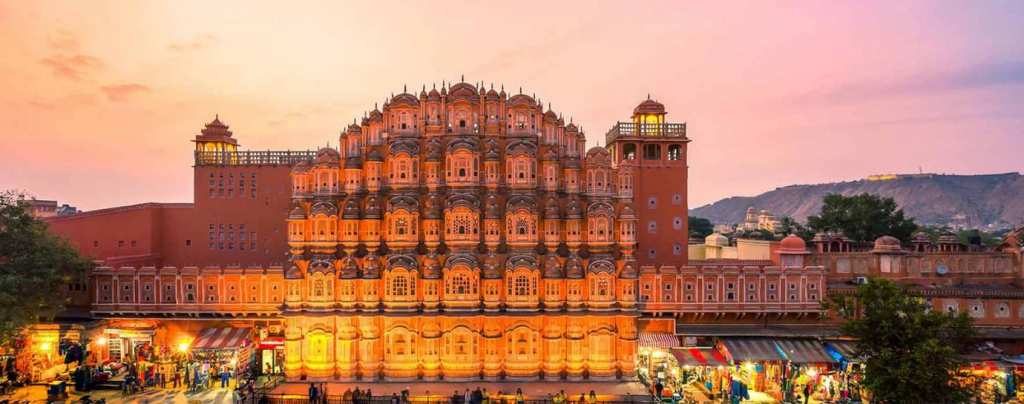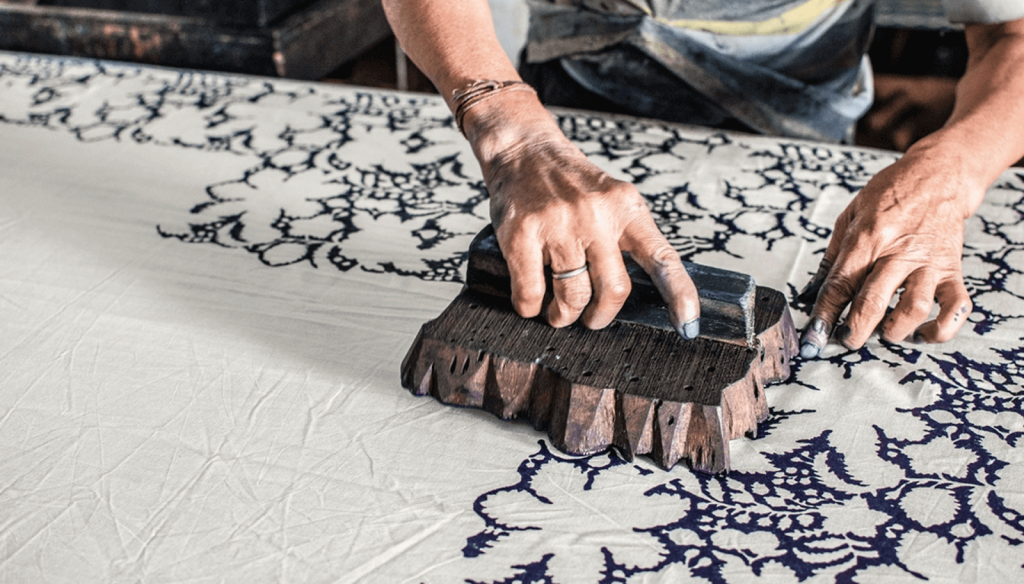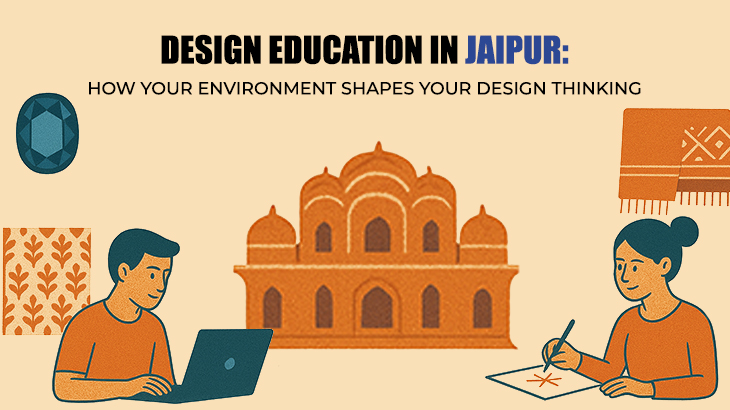Jaipur: More Than a Pink City
Step into Jaipur and you’ll quickly realize—it’s not just a city, it’s a moodboard. Known as the Pink City, Jaipur has an energy that feels like walking through a living design exhibition. Every lane offers patterns, colours, and textures waiting to be noticed. For a design student, the city is more than a backdrop—it’s a classroom without walls. Whether you’re into fashion, jewellery, interior design, or graphic design, Jaipur quietly shapes the way you see, think, and create.
How Your Surroundings Shape Design Thinking
Design thinking often begins with observation. In Jaipur, your surroundings constantly nudge you to look closer. The way sunlight hits the latticed windows (Jharokhas) of Hawa Mahal, the symmetrical layout of the Pink City, or the riot of colours in Johari Bazaar—all become lessons in scale, proportion, and balance.

If you’re a fashion student, a stroll through the textile markets reveals the magic of block printing from Bagru, Bandhani tie-dye, and Indigo dyeing. For interior design students, inspiration comes from restored havelis, traditional stone inlay and marble work, and even the modern boutique hotels that reinterpret heritage. For graphic design students, the hand-painted signboards on local shops and the playful typography of vintage cinema posters spark fresh ideas for branding and visual identity. What makes design education in Jaipur truly unique is its interdisciplinary spirit—where a motif from a textile can inspire a jewellery collection, or the rhythm of a hand-painted poster can influence fashion prints, showing students how creativity flows across disciplines.
Learning from the Streets of Jaipur
What makes Jaipur so exciting is that the city itself becomes your lab.
- Fashion design students get to see block printers in Sanganer dipping wooden blocks into natural dyes, pressing them with rhythmic precision, and turning plain fabric into living art. The process makes you rethink fast fashion and inspires more mindful design choices.
- Jewellery design students find their playground in the bylanes of Johari Bazaar, where workshops buzz with the clink of chisels. Jaipur is known globally as the jewellery hub of India, famous for Kundan, Meenakari, Polki, and gemstone cutting. Watching a raw stone transform into a sparkling gem teaches patience and precision like no other experience.
- Interior design students draw endless inspiration from Jaipur’s havelis and boutique hotels. Places like Narain Niwas Palace or Samode Haveli showcase how heritage interiors can be reimagined for modern living without losing their soul.
- Graphic design students can’t miss Hathi Gaon (Elephant Village) murals, vibrant festival posters, or the playful branding of Jaipur’s cafés like Tapri Central. These examples prove how deeply local culture influences visual storytelling.
Fashion in Full Colour: Textiles that Teach
Jaipur is world-famous for its textiles, and for fashion students, this is pure inspiration. Bagru block printing, Bandhani tie-dye, and Indigo dyeing traditions aren’t just craft—they’re design thinking in action. Each technique tells a story of sustainability, resourcefulness, and cultural pride. Seeing these practices up close inspires students to experiment with colour palettes, surface textures, and garment construction while staying rooted in craft. Seasonal prints and colours in Jaipur and Rajasthan add another layer of inspiration—the earthy reds and maroons of winter shawls, the bright yellows and greens of spring festivals like Gangaur, and the vibrant pinks and blues that flood the bazaars during summer. These shifting palettes, tied deeply to cultural rituals and local climate, show students how fashion can be both timeless and responsive, offering endless possibilities for design innovation.
Jewels of Johari Bazaar: Lessons in Craft
For jewellery students, Jaipur is nothing short of a treasure chest. The Johari Bazaar lanes are alive with workshops where artisans work on Kundan, Polki, Meenakari, and gemstone cutting. The city is a global centre for jewellery exports, so students don’t just learn the artistry—they also get a glimpse into the business side of jewellery design. This dual exposure—craft and commerce—prepares them to innovate while staying market-ready.

Havelis to Hotels: Interiors That Inspire
Jaipur’s interiors are stories in themselves. Samode Haveli and Narain Niwas Palace are prime examples of how heritage-inspired interiors can find new life in modern times. Frescoes, antique furniture, and bold colours sit comfortably alongside contemporary design elements. For interior design students, this fusion of Rajasthani décor styles with modern design sensibilities teaches how to balance preservation with reinvention.

Walls That Speak: Jaipur’s Visual Language for Graphic Designers
Graphic design students in Jaipur are surrounded by a living gallery of visual inspiration. From hand-painted signboards in bustling markets to the playful branding of modern cafés, every wall and surface carries a story. The typography of vintage Bollywood posters, the murals at Hathi Gaon, or the vibrant festival graphics seen during Teej and Gangaur celebrations—each offers a masterclass in colour, typography, and cultural identity.
The city’s colour palettes are equally instructive: the soft pinks and terracotta hues of Jaipur’s old walls, the indigos of traditional dyeing, the saffron and marigold tones of festive decorations, and the cool turquoise seen in palace frescoes. For students, these combinations show how colours can evoke mood, tradition, and modernity all at once. Studying these palettes encourages experimentation, helping designers craft visuals that are not only aesthetically strong but also culturally rooted.

Studios, Cafés, and Classrooms: Where Students Learn by Doing
Beyond heritage, Jaipur’s design education ecosystem thrives on collaboration. Students find internships with fashion boutiques, jewellery exporters, graphic design studios, and interior design firms. A fashion student might work with a sustainable clothing label using natural dyes. A jewellery student might intern with a gemstone exporter. Interior design students often collaborate on redesigning cafés or boutique spaces, while graphic design students take up branding and UI/UX projects for start-ups.
This balance of classroom learning and real-world exposure makes design education in Jaipur deeply immersive.
Balancing Heritage and Innovation
Jaipur teaches you to keep one foot in tradition while stepping into the future. Fashion students reimagine Bandhani and block prints for contemporary wear. Jewellery students explore 3D printing but still respect the fine detailing of Meenakari. Interior students experiment with sustainable materials while borrowing motifs from heritage palaces. Graphic designers bring local art motifs into digital media design and motion graphics projects.
This balance is what makes Jaipur such an inspiring environment—it never lets you forget your roots while pushing you towards innovation.

Designing With a Jaipur State of Mind
In Jaipur, design education never really ends when you step out of the classroom. It continues in the block-printed fabrics of Sanganer, in the sparkle of gemstones in Johari Bazaar, in the calm courtyards of a haveli, and even in the quirky branding of a café.
Being a Design hub, the city itself becomes a collaborator in your creative journey. It reminds you that design isn’t just about making things look beautiful—it’s about telling stories, solving problems, and reimagining the future. And for students learning in Jaipur, that’s the greatest design lesson of all.
At ARCH, we believe that design education goes beyond classrooms—it’s about engaging with the environment, culture, and community that shape creativity. Located in Jaipur, a city that is itself a living design laboratory, ARCH empowers students to explore, question, and innovate while staying rooted in tradition. Through experiential learning, industry collaborations, and a focus on sustainability, ARCH nurtures young designers who are ready to make an impact in fashion, interior, jewellery, and graphic design. Here, every student is encouraged to weave their unique design journey, inspired by the heritage of Jaipur and driven by the possibilities of the future.
